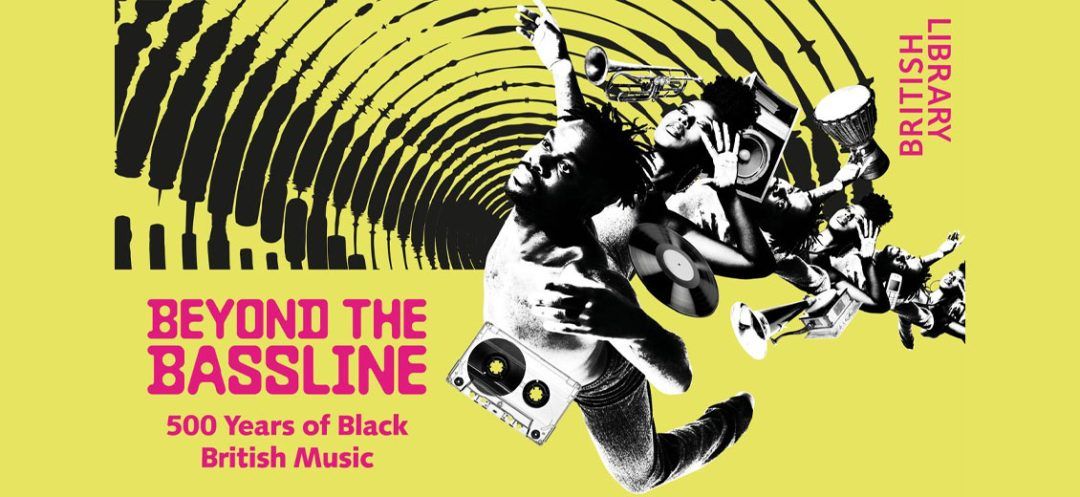
The British Library’s groundbreaking exhibition “Beyond the Bassline” celebrates five centuries of Black British music. From colonial roots to modern-day stars, this immersive journey showcases the cultural impact and evolution of African and Caribbean musical heritage in the UK.
In the heart of London, the British Library opened its doors to a revolutionary exhibition that’s making waves in the cultural scene. “Beyond the Bassline: 500 Years of Black British Music” is not just another display of artifacts; it’s a sensory journey through time, space and sound that celebrates the often overlooked contributions of African and Caribbean communities to Britain’s rich musical tapestry.
As visitors enter the exhibition, they’re immediately struck by the eclectic mix of objects on display. A champagne bottle signed by grime superstar Stormzy sits near Beethoven’s tuning fork, while a massive peacock costume from the Leeds Carnival adds a splash of vibrant color. These seemingly disparate items are united in their significance to Black British musical history, offering a tangible connection to the sounds and stories that have shaped the nation’s cultural landscape.
The exhibition is thoughtfully divided into five sections, each representing a different era or aspect of Black British music. Beginning with “Ocean,” which delves into the complex colonial past, visitors are guided through a chronological exploration that culminates in “Cyberspace,” examining the impact of technology on modern Black British artists and their growing mainstream success.
What sets “Beyond the Bassline” apart is its immersive approach. Each section is accompanied by carefully curated soundscapes, moving images and artistic collaborations with community organizations from across the UK. This multisensory experience allows visitors to not just see, but hear and feel the evolution of Black British music over the centuries.
Lead curator Aleema Gray describes the exhibition as a journey through time and space, emphasizing its primary target audience: young people, music fans and members of African and Caribbean heritage communities. Recognizing that these groups have historically felt excluded from institutions like the British Library, Gray and her team have made a concerted effort to create a welcoming and inclusive environment.
This inclusivity is evident in the exhibition’s language, with text labels using “we” and “our” to create a sense of dialogue with visitors. It’s a subtle but powerful choice that helps break down barriers and invites engagement from all who attend.
The British Library’s vast sound archive, boasting over six million recordings, provides the perfect backdrop for an exhibition that places equal emphasis on audio and visual elements. With 300 artifacts on display, “Beyond the Bassline” represents over a year of painstaking curation and organization.
Throughout the exhibition, the theme of music as a vehicle for community shines through. Gray has made a deliberate effort to highlight regional narratives, acknowledging that while London may dominate the Black music scene, significant contributions have come from all corners of the UK. This is exemplified by inclusions such as a dance video from Cardiff’s Jukebox Collective and an installation celebrating the influence of faith on Black British music.
The exhibition concludes with a stunning immersive short film, “Iwoyi,” created in collaboration with the south London group Touching Bass. This final piece serves as a bridge between the past, present and future of Black British music, encapsulating the exhibition’s forward-looking perspective.
The public response to “Beyond the Bassline” has been overwhelmingly positive, with musicians and young people expressing particular enthusiasm. Many artists have been moved to see their stories and contributions acknowledged within the prestigious walls of the British Library, a testament to the exhibition’s significance in recognizing often overlooked narratives.
Looking beyond the exhibition’s run, which ends on August 24, Gray and her team are already focused on cementing its legacy. Plans include a companion book and ongoing events featuring collaborations with local artists, ensuring that the conversation and celebration of Black British music continue long after the exhibition closes.
By bringing these stories into the mainstream, the British Library is paving the way for a more inclusive and diverse future in Britain’s musical landscape. As Gray aptly puts it, “The exhibition is not just about the past and the present, it’s about the future.”
With AFP
Read more



Comments